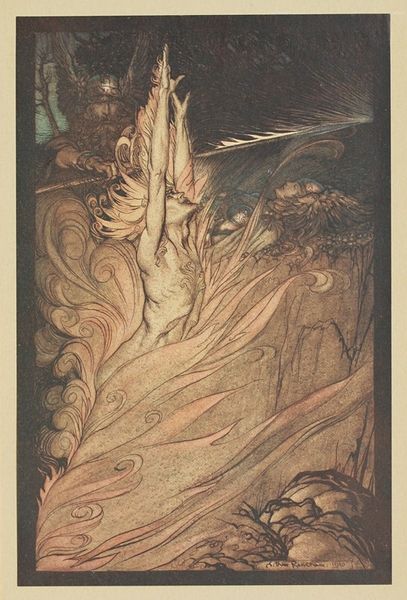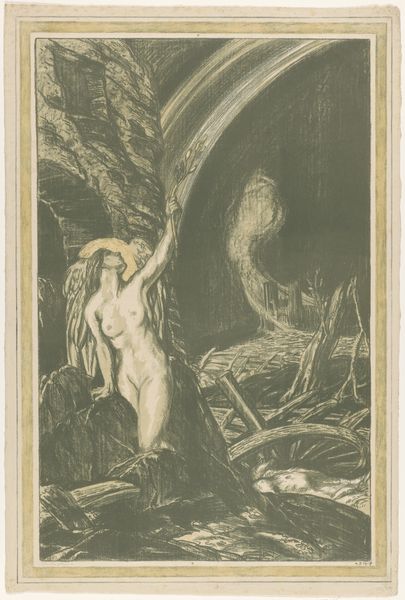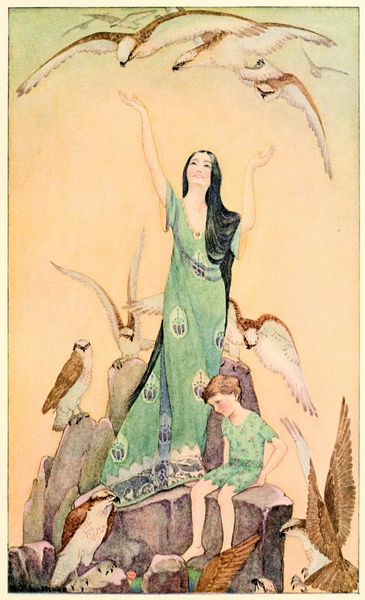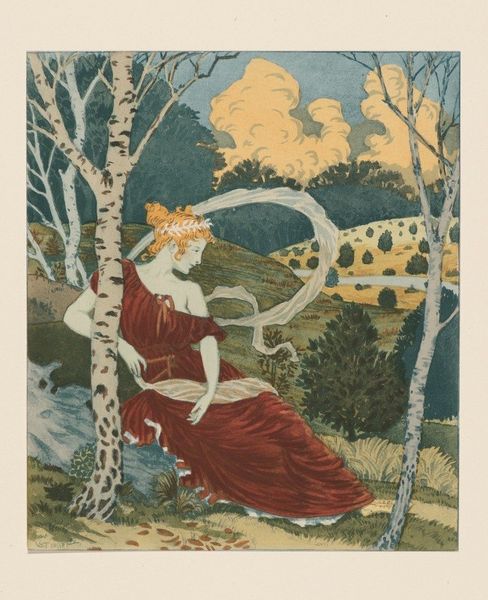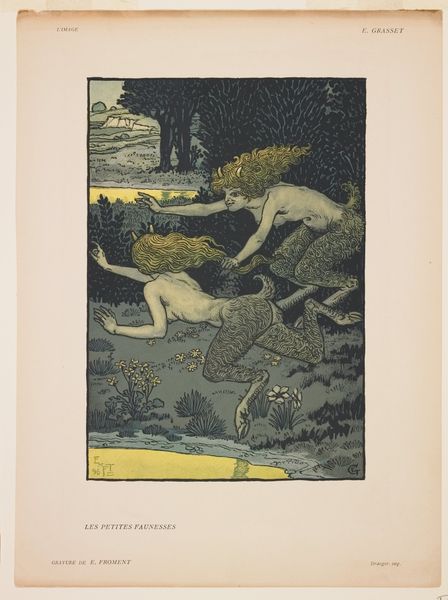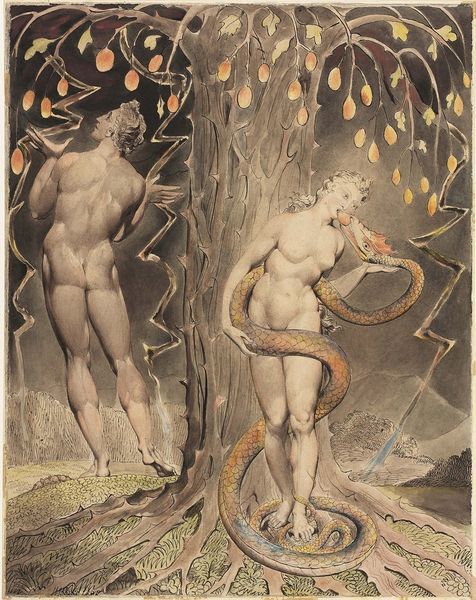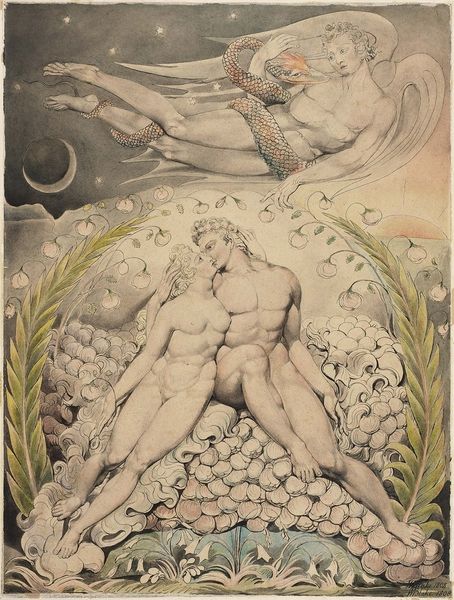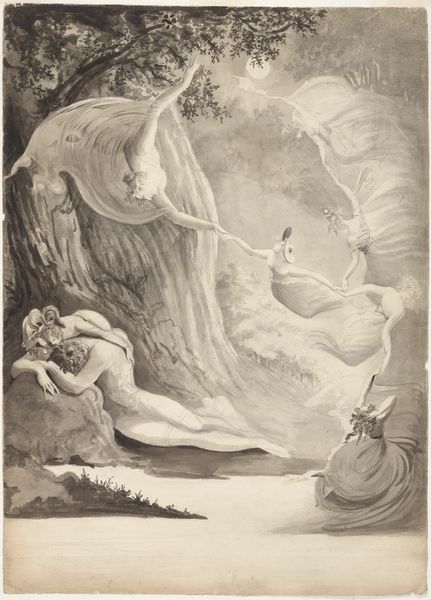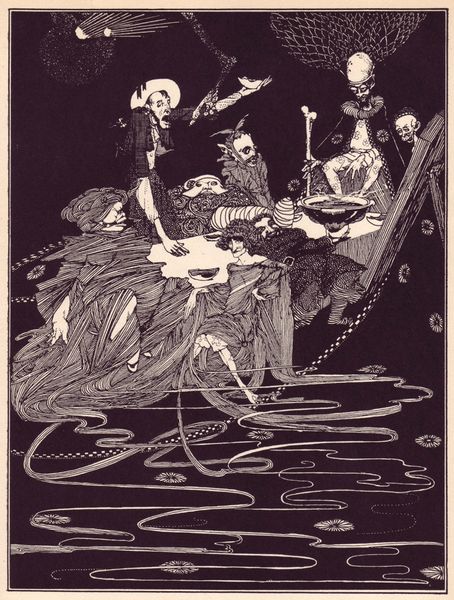
Dimensions: image: 200 x 137 mm
Copyright: CC-BY-NC-ND 4.0 DEED, Photo: Tate
Curator: This is Charles Ricketts' "Frontispiece to ‘The Dial’," currently residing in the Tate Collections. Editor: Ethereal and strange! The pale serpent and the nude figure create an otherworldly scene. Curator: Ricketts was a key figure in the fin-de-siècle aesthetic movement, and 'The Dial' was a vehicle for promoting their artistic vision and ideals. Editor: I see symbols of nature, a powerful goddess, and a mythical beast. It speaks to a connection between the physical and spiritual realms. The serpent, a symbol of transformation perhaps? Curator: It absolutely ties into the Symbolist movement's interest in dreamscapes and the exploration of inner emotional states through external symbols. "The Dial" positioned itself against Victorian academicism. Editor: The composition, with the serpentine creature mirroring the woman's flowing hair, evokes fluidity and perhaps a hint of danger. It’s a captivating image. Curator: Indeed, Ricketts used his art to challenge convention, both in subject matter and in the means of production. Editor: Seeing it in this context, it becomes clear it’s more than just a pretty picture. The piece serves as a bold statement.
